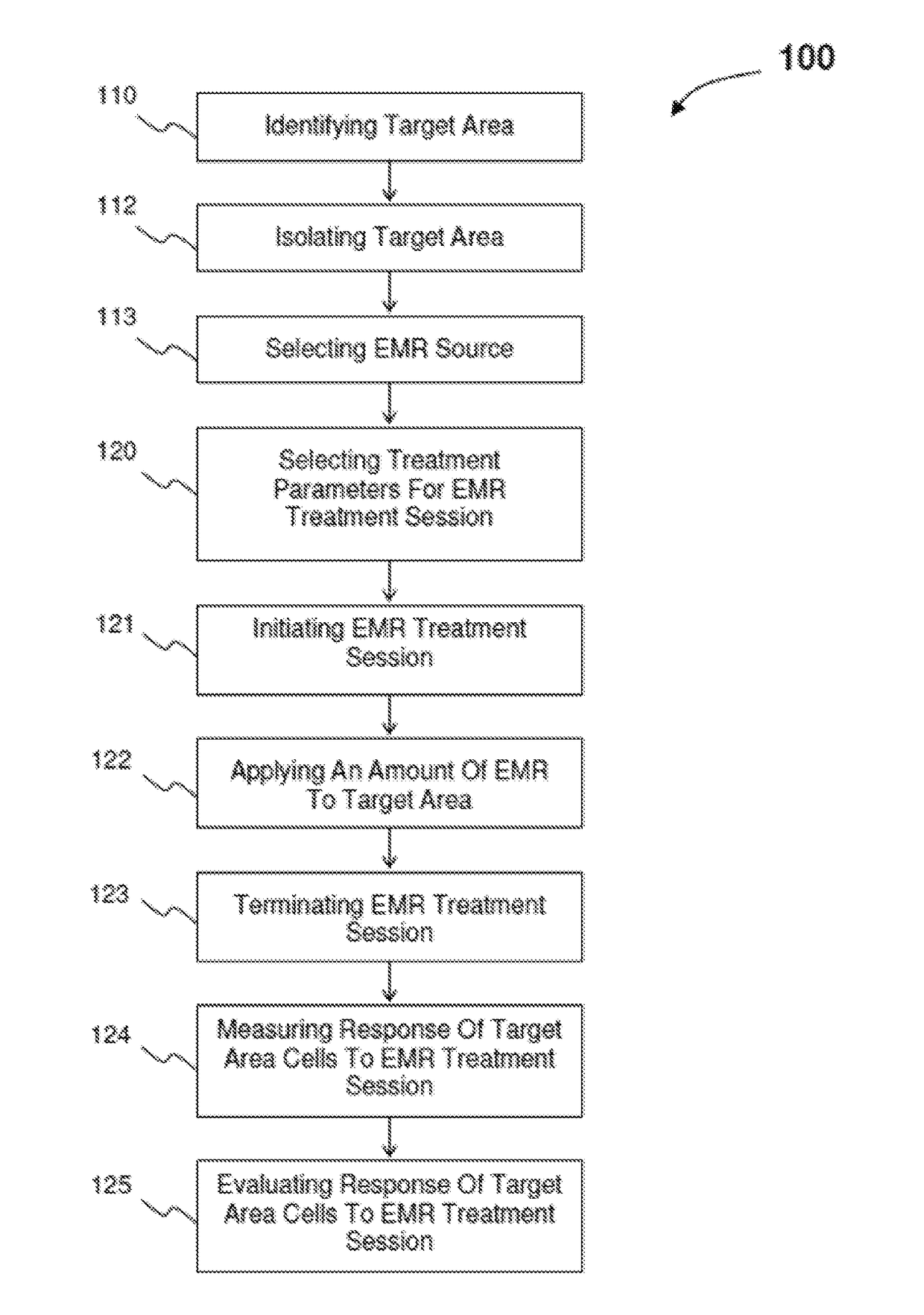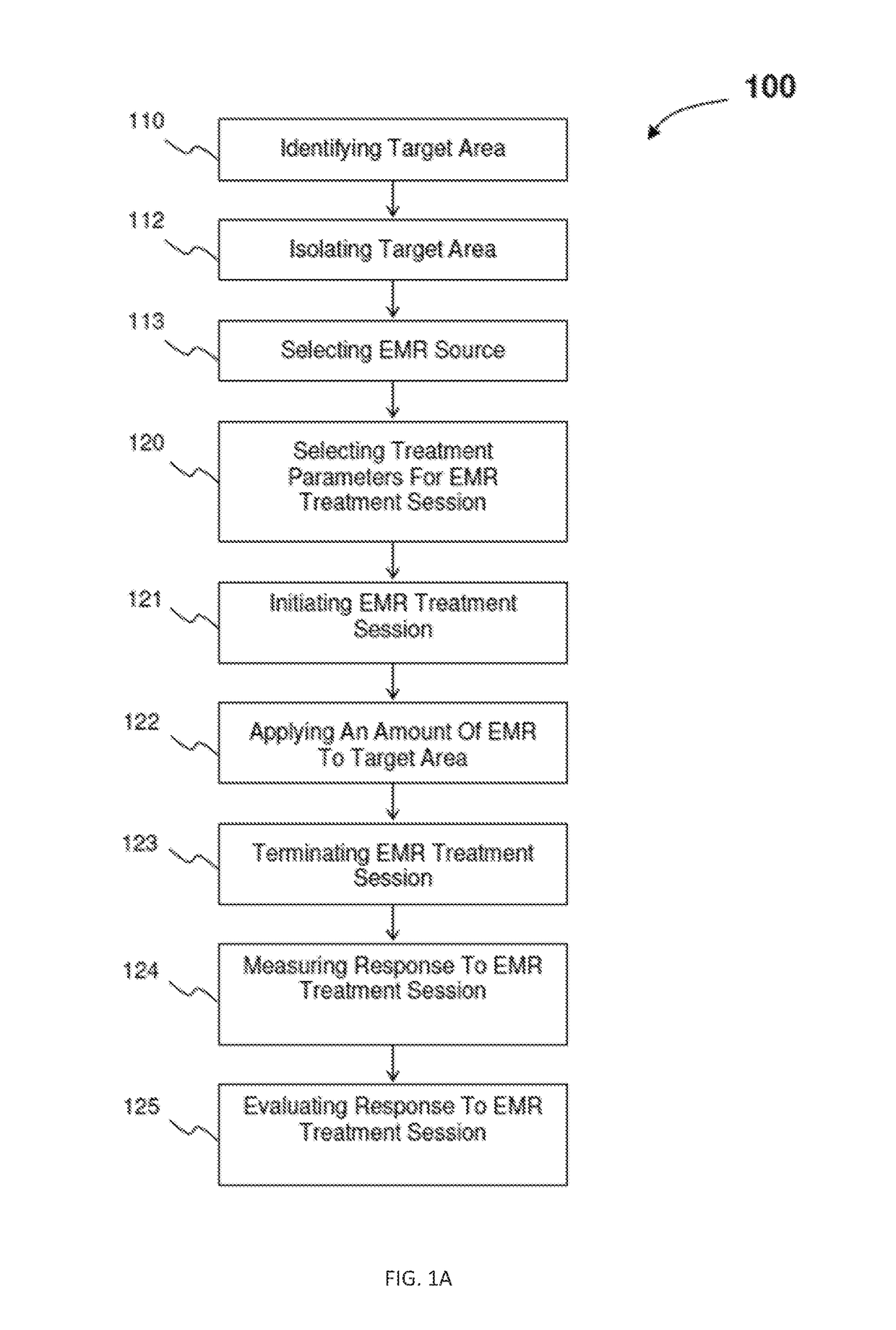Electromagnetic radiation treatment
a radiation treatment and electromagnetic technology, applied in the field of electromagnetic radiation treatment, can solve the problems of interference of normal cell functioning and processes, requiring an appreciable amount of energy to maintain, and limited studies on membrane potential
- Summary
- Abstract
- Description
- Claims
- Application Information
AI Technical Summary
Benefits of technology
Problems solved by technology
Method used
Image
Examples
Embodiment Construction
[0064]The treatment regimen of the present disclosure utilizes electromagnetic radiation (“EMR”) to treat cancer cells, or other cells amenable to pathological genetic regulations. The method of the present disclosure represents an ensemble of subcellular elements targeted substantially simultaneously to interfere with a cancer cell's control system, and to restore a normal control system to the cancer cell. More in particular, the present method utilizes both electrical current and magnetic fields as significant vehicles of action on specific molecular and atomic components of a cancer cell, such as, the protons and electrons of the cancer cell, to elicit a beneficial therapeutic effect. The present method takes advantage of the significant differences in the electromagnetic properties of normal and cancer cells. Specifically, the differences between the electromagnetic properties of normal cells and cancer cells transcend the molecular realm, and extend into the quantum mechanism ...
PUM
 Login to View More
Login to View More Abstract
Description
Claims
Application Information
 Login to View More
Login to View More - R&D
- Intellectual Property
- Life Sciences
- Materials
- Tech Scout
- Unparalleled Data Quality
- Higher Quality Content
- 60% Fewer Hallucinations
Browse by: Latest US Patents, China's latest patents, Technical Efficacy Thesaurus, Application Domain, Technology Topic, Popular Technical Reports.
© 2025 PatSnap. All rights reserved.Legal|Privacy policy|Modern Slavery Act Transparency Statement|Sitemap|About US| Contact US: help@patsnap.com



